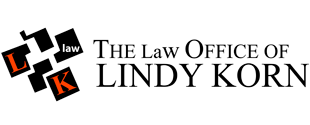Article appeared in The Buffalo Law Journal, December 5, 2002
Individual liability for managers based on then-actions has been found based on section 296.6 of the New York Human Rights Law (NYHRL), which provides that: “It is unlawful for any person to aid, abet, incite, compel or coerce the doing of any of the acts forbidden under this article or to attempt to do so.”
The Second Circuit has held that this language imposes individual liability on “a defendant who actually participates in the conduct giving rise to a discrimination claim” (Tomka, 66F, 3rd at 1317), “even though the employee is not alleged to have any power to do more than carry out personnel decisions made by others” (Tomka; Chamblee v. Harris & Harris, Inc., 154 F. Supp.2d 670, SDNY 2001; McCoy v. City of New York, 131 F. Supp.2d 363, 370-71, EDNY 2001; Amhed 2000 U.S. Dist. Lexis 10789, 2000WL11072299.
In a recent case, Horvath v. American Tissue Corp. (210 F. Supp2d 189, EDNY 7/17/02), the court held that although the supervisor was not liable as an owner or a sufficiently powerful manager with the company, he was liable under the NYHRL as a “defendant who actually participates in the conduct giving rise to a discrimination claim” because his conduct formed the basis of the complaint.
The Facts of the Case
The former employee, Horvath, alleged that her supervisor had constantly stared at her breasts, asked her to go for walks with him and commented on her looks during a three-month period when he supervised her. He also took her hand and kissed it in a way that could be deemed as physically threatening or humiliating. When Horvath asked for help with work-related matters, he responded by asking, “What’s it worth to you?”
It is important to note that Horvath complained to three superiors – the human resources manager, a senior vice president and the chief financial officer – about the hostile environment, but they failed to correct it.
In this case, Horvath alleged that her supervisor actually created the hostile environment and that his conduct bad a negative impact on her well-being.
Take-home Message
The courts consider the totality of the circumstances in order to determine whether a hostile work environment has been created. The circumstances often include the frequency and severity of the discriminatory conduct; whether the conduct is physically threatening or humiliating; whether it unreasonably interferes with an employee’s work performance; and the effect the conduct had on the employee’s well-being. In this recent decision, the courts are telling us that if a supervisor is responsible for creating the hostile environment, then individual liability will be imposed under the NYHRL.
It is not the title of supervisor that imposes individual liability, but rather the actions and participation of the supervisor that give rise to a discrimination claim.
Since the term “hostile environment” is difficult to define, fact patterns such as these make an appropriate example when employers train their supervisory employees to prevent such risks.



